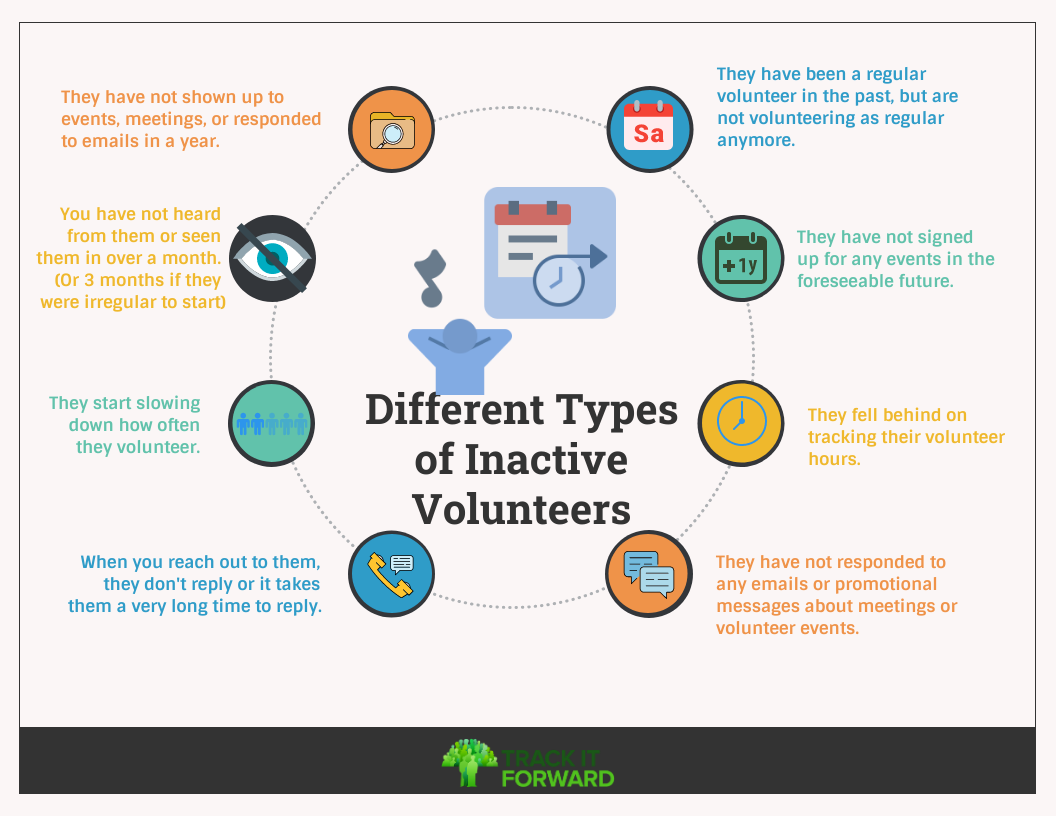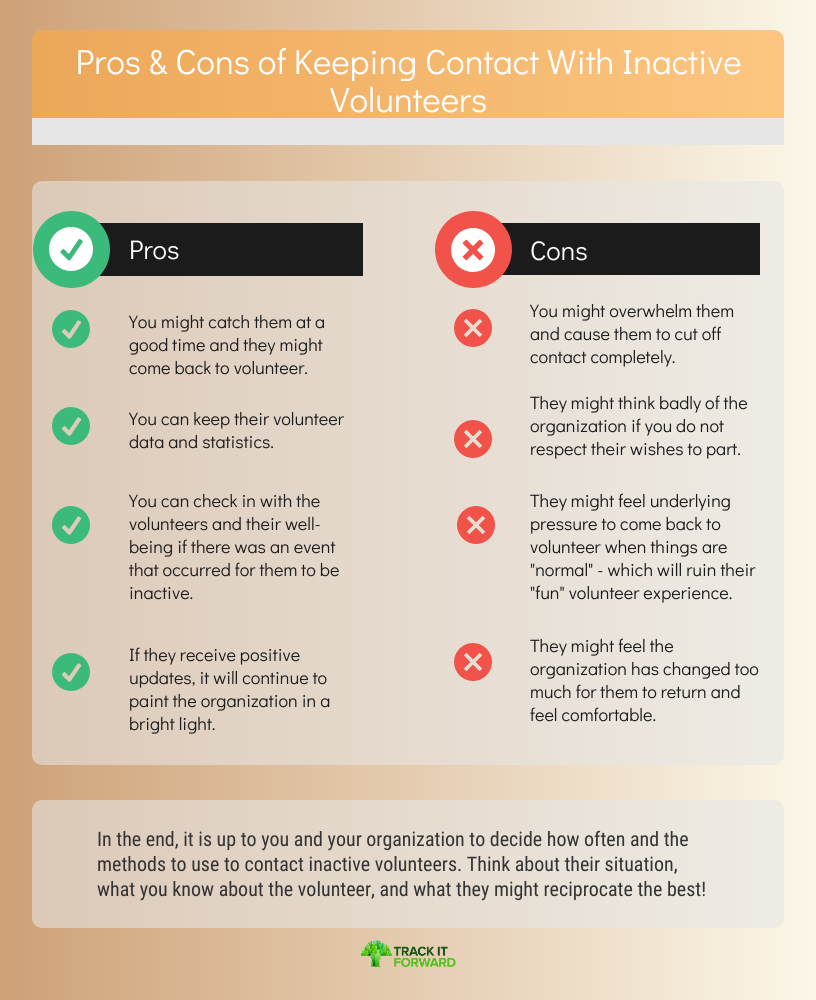The Real Lives of Volunteer Coordinators
A Blog for us to Learn from Each Other
Unfortunately, it happens to all volunteer programs. Volunteer Coordinators and Managers face inactive volunteers within volunteer programs all the time, for a multitude of reasons.
Volunteers can become inactive for many reasons including, but not limited to:
Moving location
Over-committing themselves
Feeling too pressured or overwhelmed to volunteer
Not feeling fulfilled when volunteering
If you are struggling to retain volunteers, check out this article to prevent volunteers from turning into an inactive status!
How your organization defines inactive volunteers is up to you! You could even use different classifications of inactive volunteers to determine how little or how often you will contact them.
Especially with busy seasons or even pandemics, like coronavirus, it is important to keep in mind that some volunteers might have been caught up in more important business or parts of their life. Be sure to always consider how volunteers have other responsibilities in their lives before reaching out to them, just to be sure to be sensitive!
Here are some examples of how you can define Inactive Volunteers

So, how should you contact inactive volunteers?
No matter what type of inactive volunteer you find yourself with, they should instantly be treated as an inactive volunteer, which will be different from your current volunteer base.
Depending on how you operate within your volunteer program, you can start by taking time out of your schedule every month to check on your volunteers to see which ones have been lagging behind in volunteering.
If you have good volunteer software, you should be able to see which volunteers seem to be more active than others. You can then point out different volunteers who seem to be going inactive. Then, you can send them special communication to ask them how they are doing and if there are any reasons they have not signed up for volunteering or been to meetings.
Then, you can offer them different opportunities than normal. If inactive volunteers are overwhelmed with external responsibilities or feel too pressured to volunteer regularly, this is a good time to let them know of other short-term volunteer opportunities or irregular volunteering. Ensure them that they should not feel pressured to volunteer.
Making your volunteer program comfortable for infrequent volunteers is a great way to keep nurturing volunteers instead of them becoming inactive.
After doing this sort of contacting and checking in with volunteers, you should be able to gauge whether they are fully becoming an inactive volunteer. This means that they are at their ends wit and probably won’t show up to volunteer or to meetings for a long time.
Although this point of realization is unfortunate, it is important to keep track of which volunteers are inactive so you are able to factor in how many volunteers you can count on and configure into your goals as a volunteer program.
In your volunteer software, you might be able to find a way to archive volunteers. This is a great way to take inactive volunteers out of your current volunteer tracking system, but still keep their contact information in case they come back!
Track It Forward offers archived volunteers to be a free contact additive, so these archived volunteers will not count towards your total volunteer count, making the software less expensive!
When should I stop contacting volunteers who don’t respond?

It is a hard bandaid to rip off, but eventually, you will need to stop contacting inactive volunteers when they don’t respond or don’t show any interest in your organization.
You can definitely still contact them occasionally, but they should not be contacted as regularly as active volunteers. This is because they might get more overwhelmed with your emails and contact attempts when they are inactive and decide to unsubscribe or delete your emails without looking.
If you contact inactive volunteers irregularly just to keep your organization in their mind, they will not get overwhelmed and might actually one day see that your organization emailed them and that they would like to come back.
It is up to your organization exactly how long you will accept inactive volunteers before archiving or treating them as fully inactive. It is safe to say if you do not hear from them over the course of a year, they are inactive. But, if you are starting with an irregular volunteer to begin with, it is okay to extend this a little bit.
If you use an email service that tracks your email interaction, this should be quite easy to find. If not, it might take a little bit longer just to double-check the last contact you’ve had with inactive volunteers.
Once you declare an inactive volunteer, DO NOT THROW AWAY THEIR CONTACT DETAILS! While you might not be contacting them as often, you can still keep their contact information for future reference to contact and check up on them. And, if you keep their contact information in a volunteer software system, you can archive all their previous volunteering details. This can definitely be useful to showcase their total volunteer hours if they decide to take a break from volunteering but come back. It is important to keep data that will help showcase inactive volunteer’s impact as a whole.
Track It Forward is a volunteer time tracking software system that helps support the process of active volunteers turning into inactive volunteers, and even the possibility of them returning. We do not charge for archived volunteers and all of the volunteer data will consistently be reachable!
 Last updated by
Last updated by